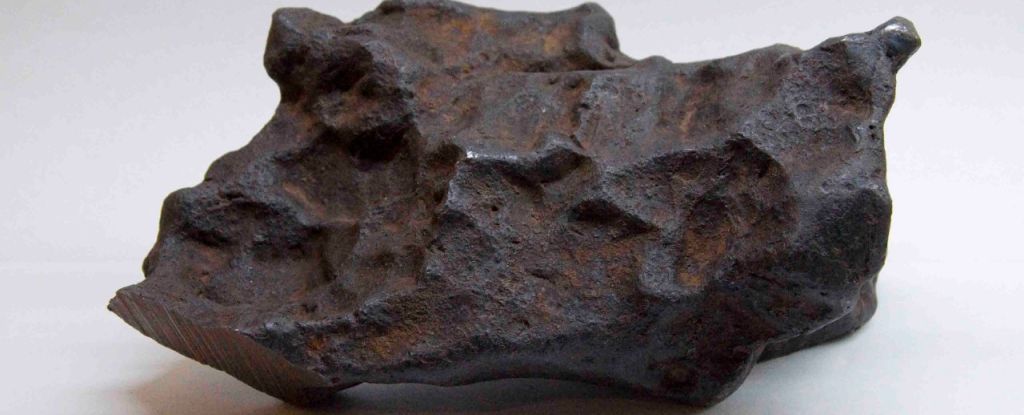Products You May Like
The shape of the Solar System was once a little more on the doughy side.
Before it arranged itself into a flattened disk, the distribution of dust and rocks had more in common with a donut than a pancake. This is the conclusion scientists reached after studying iron meteorites from the outer Solar System, finding that they can only be explained if the Solar System’s shape was once toroidal.
This is information that can help us interpret other emerging planetary systems and determine the order in which they assemble.
The formation of a planetary system around a star starts in a molecular cloud of gas and dust drifting through space. If a portion of the cloud becomes dense enough, it will collapse under its own gravity, spinning as it goes, becoming the seed of a growing baby star. As it spins, the material in the surrounding cloud pulls into a circling disk that feeds into the protostar.
Within that disk smaller clumps form, becoming protoplanetary seeds that either continue to grow into full planets, or – what seems far more frequent – have their development arrested, remaining as a smaller object like an asteroid.
We’ve seen these disks time and again around other stars, with gaps carved by planets slurping up the dust as they go.
But iron meteorites found here in our own Solar System tell another part of the story.
According to a team led by planetary scientist Bidong Zhang of the University of California Los Angeles, the composition of asteroids in the outer Solar System requires the cloud of material to be donut-shaped, rather than a series of concentric rings in a flat disk. This suggests that the first stages of the system’s coalescence are toroidal.
The iron meteorites in question – chunks of rock that have made their long way to Earth from the outer Solar System – are richer in refractory metals than those found in the inner Solar System. These are metals such as platinum and iridium, whose formation can only take place in a very hot environment such as one close to a forming star.
This poses a bit of a pickle, because those meteorites came not from the inner Solar System, but the outer, which means they must have formed close to the Sun and moved outward as the protoplanetary disk expanded. According to modeling conducted by Zhang and his colleagues, though, these iron objects would not have been able to traverse gaps in a protoplanetary disk.
According to their calculations, the migration could have occurred most easily if the protoplanetary structure was toroidal in shape. This would have ushered the metal-rich objects towards the outer fringes of the forming Solar System.
Then, as the disk cooled and the planets started to form, the inability of rocks to travel across gaps in the disk would have acted as a very effective fence, keeping them from migrating back towards the Sun under the pull of gravity.
“Once Jupiter formed, it very likely opened a physical gap that trapped the iridium and platinum metals in the outer disk and prevented them from falling into the Sun,” Zhang says.
“These metals were later incorporated into asteroids that formed in the outer disk. This explains why meteorites formed in the outer disk – carbonaceous chondrites and carbonaceous-type iron meteorites – have much higher iridium and platinum contents than their inner-disk peers.”
It’s amazing what you can learn from a lump of pitted, metallic rock.
The research has been published in the Proceedings of the National Academy of Sciences.
